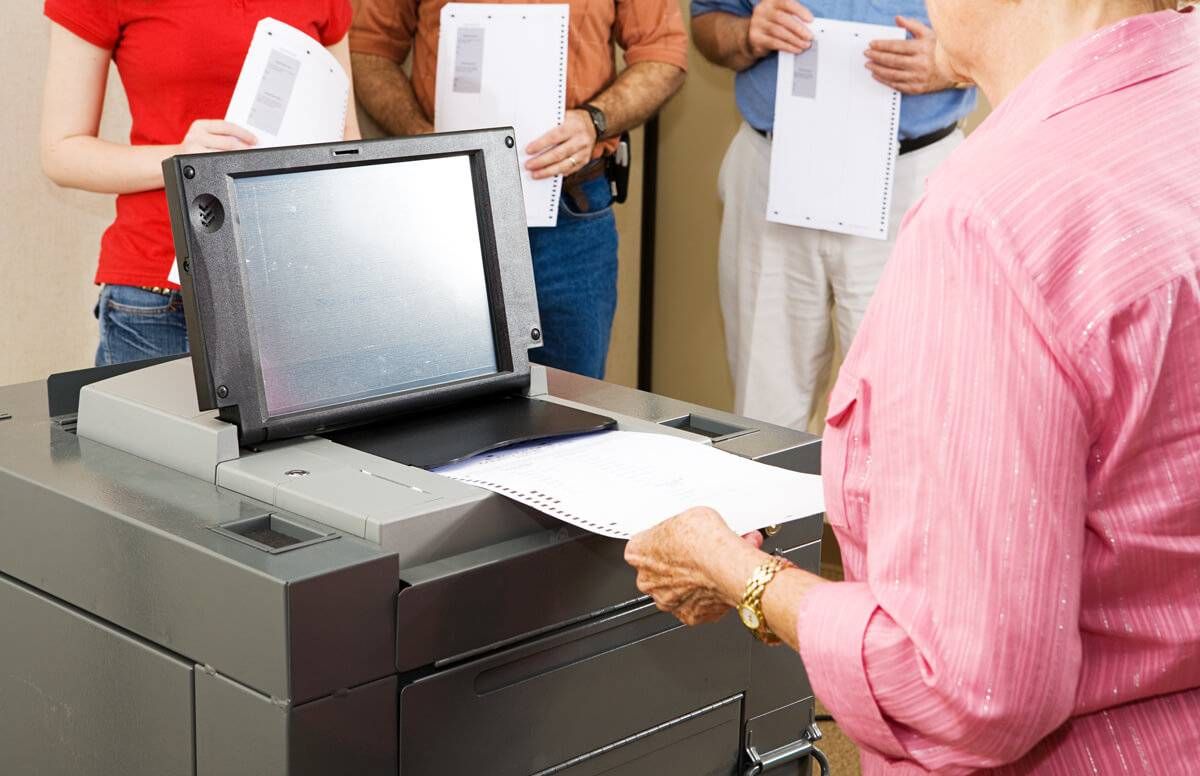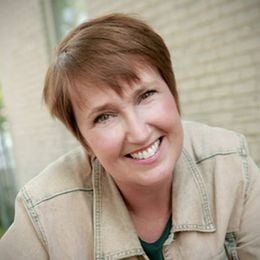Wanted: Older Adults to Serve as Poll Workers
Learn more about what it takes to be involved on Election Day
As Deputy Commissioner of Elections for Linn County, Iowa, Rebecca Stonawski is tracking hundreds of details to prepare for Election Day in November, when voters living in the greater Cedar Rapids area, like those in the rest of the nation, will mark their ballots.

One of those tasks on her to-do list is sending a card to congratulate a 90-year-old woman on her big birthday. The recipient is the oldest and longest-serving poll worker in the county.
“I think she’s been at it for 40 years. We appreciate it when people keep coming back and we’re glad when they feel that connected,” said Stonawski. “We’re counting on her again.”
The Front Line of Democracy
On Election Day, about a million poll workers will participate in the massive effort to help their fellow citizens vote. These workers will put in long hours in more than 100,000 precincts located in religious buildings, schools and fire stations set up as makeshift polling places.
Many jurisdictions are still looking for people who would be willing to join the army of citizen poll workers who assist their neighbors through the voting process. The U.S. Election Assistance Commission lists each of the 50 states and their individual requirements for what is required to be a poll worker.
“Poll workers are the front line of democracy. They’re focused on procedure, security and setting up the culture in the polling place to deliver a good voter experience. They’re crucial to securing elections and managing custody of those precious votes,” said Dana Chisnell, co-founder of the Center for Civic Design and editor of the Field Guides to Ensuring Voter Intent. Chisnell has taught thousands of election officials how to improve ballots, voter guides, websites and other election materials.
People 60 and over have traditionally answered the call to serve on Election Day in large numbers. According to the nonpartisan U.S. Election Assistance Commission, in 2016 more than half of the nation’s poll worker population was over 60, with 32 percent of them aged 61-70 and another 24 percent age 71 or older.
“There are two clusters of older poll workers. Some started as young adults, got hooked on being part of the process and have been coming back for decades. Others start when they cut back on work or retire and have the time and flexibility to participate,” said Chisnell.
Shortage of Poll Workers
It’s not too late to sign up to join them for the midterm election. Across the nation, there’s a chronic shortage of poll workers, and the hunt is on to find more citizens who can be counted on to show up at polling sites in November.
To qualify, poll workers take a short training session, typically lasting between two and five hours. The class familiarizes them with polling place technology and prepares them to follow their state laws governing how voters register, sign in and cast their ballots.
These newbies will join a team of experienced election workers. This year, these knowledgeable veterans will be particularly valuable as the first line of defense to flag any activity that suggests system-wide fraud or manipulation.
“The system counts on poll workers to ensure that every single ballot that enters the polling place is accounted for at the end of the day, and that marked ballots are protected and conveyed to a central collection point for the final official count,” Chisnell said.
Seeing an Election from the Inside
For the first time, Linn County has hired a poll worker recruiter who has scrambled to boost the team for November 6.
“Our recruiter went to clubs like the Rotary and the Optimists, set up meetings at libraries in our small towns in the county and reached out through local newspapers. We’ve got 250 people signed up to come to a meet-and-greet to learn about becoming a poll worker,” said Stonawski. “We anticipate that three-fourths of them will decide it’s a good fit and will sign up for the training.”
In Linn County, poll workers will earn $200 for their Election Day efforts. The hourly wage for staffing the polls varies by community, but most pay $12- $20 per hour; workers often have the option of volunteering rather than taking a paycheck.
Poll workers can expect to commit to a long shift on Nov. 6. Many are required to put in 16 hours, arriving to set up equipment before the polls open and then complete paperwork and tear down the polling booths at the end of the day.
“Workers tell us how much they appreciate seeing an election from the inside. It’s a different point of view than what you get when you mark your own ballot,” Chisnell said. “So many of them say they find it so satisfying to help people in their community exercise their franchise."
Answering the Call
In more than 30 years as a reporter, I looked upon Election Day like Christmas. Following lots of planning and anticipation, the big day always arrives with high emotion and some inevitable surprises.
My journalism career shifted to freelance work, so this year I had no Election Day assignment pending. But as a lifelong political junkie, I wanted in on the action, so I signed up for a shift at a polling place.
In July, I took a three-hour course at Minneapolis City Hall to qualify to be a poll worker for Minnesota’s August primary and for the general election in November.
On primary day, I rode my bike to a historic limestone church six blocks from my house, arriving at 6 a.m. to meet the seven other poll workers assigned to the precinct.
Our election judge, an experienced poll worker who had taken additional training to supervise the group, assigned opening chores and we went to work, hanging flags and signs, taping down extension cords to power the lights on voting machines and opening packages of ballots.
Minutes before the official 7 a.m. opening, we gathered in a semicircle and each raised our right hand, swearing an oath to conduct ourselves in a fair and impartial manner and to act within the law as we assisted voters.
A trio of them were waiting as the old wooden doors were thrown open. The eight of us rotated between stations, greeting voters, signing in registered voters, registering new voters, distributing ballots and manning the tallying machine, then handing out red “I Voted” stickers.
An Efficient Process
I was struck by the efficiency and transparency of the set-up and the way the system was designed to account for every vote; every ballot in the polling place was initialed by two poll workers before it was handed to a voter.
Midway through the day, a voter presented the election judge with a thank you gift for our team — a $50 pizza card and a $10 bill to tip for delivery. We called in an order for an early dinner and took turns bolting from our stations to gobble a slice or two in the church kitchen.
We were back in place as the after-work crowd arrived. By the time the line formed around 5 p.m., I had performed all of the tasks and was able to conduct them promptly and with confidence.
When 8 p.m. arrived, the last person in line fed a ballot into the tally machine and I saw that 875 voters had exercised their franchise in my precinct. At closing time, we counted the number of voters who signed in and registered to make sure it was identical to the number of ballots cast.
Throughout the day, we kept track of the voters we had to turn away — a total of nine lacked the proper credentials to be able to register and make their primary choice known. I felt certain that all of them understood what they would need to do to be prepared to vote on Election Day.
I arrived home in time to watch the late news and catch the results of the contested races, proud to know that I had been a very small cog in the large wheel of democracy.
I think I’m hooked. When the election judge asked if I would be back in November, I didn’t hesitate before replying, “Yes!"


